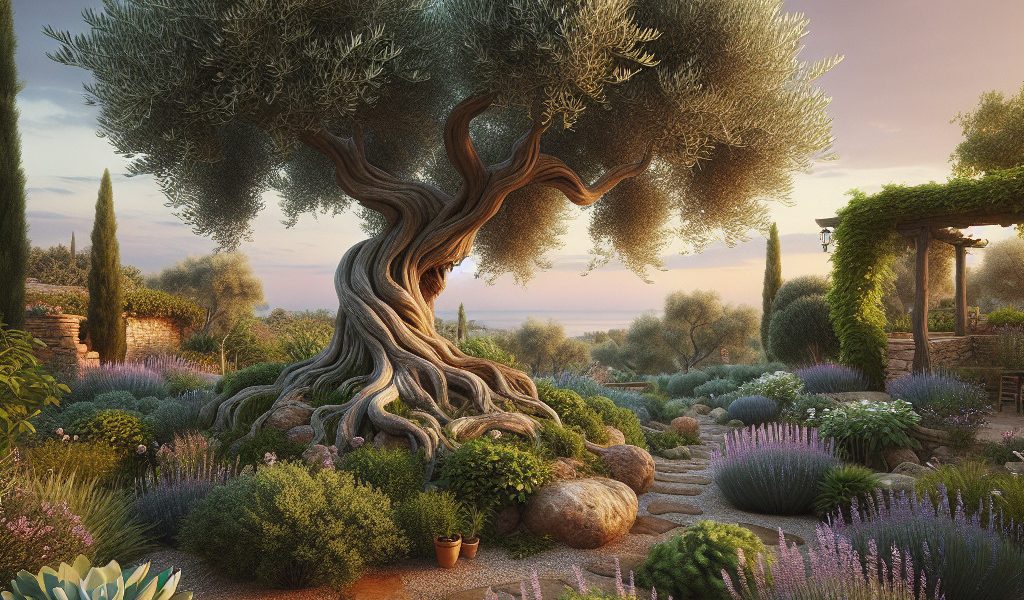Unlocking Verdant History: Nurturing a Century-Old Mediterranean Olive Tree in Your Backyard
Century-old olive trees are emblematic trees that bring a touch of authenticity and charm to Mediterranean landscapes. For those who wish to acquire one, it costs between 1,500 and 3,000 euros depending on its size and age. In this article, we will introduce you to the distinctive characteristics of these remarkable trees, as well as tips for planting and caring for them in different French climates.
The century-old olive tree: a symbol of the Mediterranean basin
The olive tree (Olea europaea) is one of the oldest trees cultivated by man. It has been present for more than 6,000 years in the Mediterranean basin, where it has played a crucial role both economically and culturally. Even today, the production of olive oil remains an essential activity for several Mediterranean countries such as Italy, Greece and Spain.
Century-old olive trees are particularly appreciated for their beauty and their resistance to climatic hazards. Their gnarled, twisting trunks bear witness to the years they have endured, while their silver-sided evergreen leaves provide a magnificent palette of colors all year round. These majestic trees can live for several centuries, even millennia for certain exceptional specimens.
Physical characteristics of the century-old olive tree
The olive tree is a slow-growing tree that can reach a height of 10 to 15 meters. Its trunk is generally short and sinuous, with grayish and rough bark. The branches are long and spreading, bearing lanceolate leaves that are dark green above and silvery below.
This fruit tree produces white or yellowish flowers in spring, followed by olives which ripen between October and January depending on the variety. Harvesting the fruit produces precious olive oil, which has multiple health benefits.
Cold resistance
Olive trees are known for their great resistance to low temperatures. They tolerate light frosts down to -10°C for short periods without any problem. However, young plants as well as less hardy varieties should be protected when the mercury drops below -5°C.
Soil requirements
The olive tree needs well-drained soil to grow properly. It tolerates different types of substrates (clayey, limestone or sandy), but prefers stony and not very fertile soils. Soil that is too rich in nutrients can cause excessive growth of the tree and harm the quality of the olives.
Planting and maintaining a century-old olive tree in France
If you want to plant a century-old olive tree in your garden, here are some tips for making this successful:
- Choosing the right location: The olive tree needs a sunny space, sheltered from cold winds. Choose an open location with a south or southwest exposure.
- Prepare the terrain : Before planting your tree, it is important to improve the soil structure by adding sand or gravel to ensure good drainage. Then dig a hole approximately 1 meter deep and wide, then add a bed of gravel at the bottom to facilitate water drainage.
- Put the tree in place: Carefully place the olive tree in the prepared hole, then fill with loosened soil mixed with well-rotted compost. Tamp lightly around the trunk to eliminate air pockets and water thoroughly after planting.
Routine maintenance
To guarantee good health for your century-old olive tree, be sure to follow these few maintenance rules:
- Watering: The olive tree is a drought-resistant tree, but it appreciates regular watering during the first years after planting. Thereafter, watering every 15 days during periods of drought will be sufficient.
- Size : Pruning the olive tree must be carried out at the end of winter or at the beginning of spring, in order to promote good fruiting and ventilate the branches. Remove dead or diseased branches, as well as those that cross each other.
- Fertilization: An annual addition of well-decomposed compost around the base of the tree will maintain its vigor and improve the quality of the olives.
Protecting the olive tree during cold months
To protect your century-old olive tree from the harsh winters, here are some tips:
- Setting up mulch: Cover the soil around the trunk with a thick layer of straw or dead leaves to protect the roots from frost.
- Trunk protection: Wrap the trunk with a winter veil or insulating material to limit the risks linked to low temperatures and freezing winds.
- Moving the potted plants: If your olive tree is grown in a pot, bring it into an unheated veranda or greenhouse during the winter to protect it from the cold.
By following these tips, you will be able to enjoy the beauty and majesty of a century-old olive tree in your garden. These iconic trees are a true symbol of Mediterranean landscapes and will bring a touch of elegance to your outdoor space.
